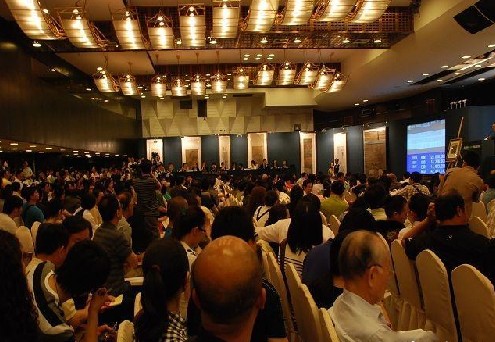(Ecns.cn)--In 2009 a venerable painting by Ming Dynasty artist Wu Bin sold at auction for the price of 168 million yuan (US$26.4 million), escalating the valuations of Chinese painting and calligraphy art work and launching a new era in this market.
More works were sold for over 100 million yuan, and in May 2011, a painting by the famed Qi Baishi went for 425.5 million Yuan (US$67 milion). According to the industry insiders, the pricing trend for traditional paintings and calligraphy will continue to rise and may soon even surpass 1 billion yuan (US$157.5 million).
Though the traditional Chinese art market seems to be in a time of prosperity, problems are appearing. Counterfeits of famous paintings and calligraphies are not hard to find at certain auctions, and some buyers, though they bid for such art works, fail to pay for them after the auction.
The work by Qi Baishi that sold In September, 2011 for 425.5 million yuan has been fingered as a fake by experts in Shandong and Hebei. Yet another painting, by Xu Beihong this time, sold for 70 million (US$11 million) at an auction in 2010, but was also classified as a counterfeit by famous Chinese painter Chen Danqing. It is thought to be the work of a student at China Central Academy of Fine Arts.
"Counterfeit works commonly turn up in the art market," concedes veteran art collector Ma Weidu. Generally speaking, the industrial chain feeding the practice is as follows: making fake art works, publicizing the counterfeit and encouraging speculation, putting it on auction with forged expert appraisals, then speaking in defense of its provenance.
There are many groups in China making fakes. Popular models are drawn from the paintings of Xu Beihong and Qi Baishi, but also from the works of Zhang Daqian, who was prominent in the Qing Dynasty. The practice is so pervasive, industry insiders who have been moving in these circles for years can even spot which one of the counterfeiting operations is responsible for a recently discovered fake.
"For many collectors, whether the art work is real determines the greatest part of its value, while for art work investors, the price a work of art can fetch, no matter whether it is genuine or not, is what matters most," added Ma. Speculators who want to make money from the market for fakes will commission them at comparatively low prices, publicize the work to push up its value, then get a massive return on their investment at auction.
Investors and speculators have seriously complicated the traditional Chinese art market. The authorities began to take steps to control the Chinese real estate market in 2000, forcing many investors to shift their cash infusions into the art market. As money floods a market, especially suddenly and in large amounts, problems are unavoidable.
Investors and speculators are profit-oriented, but established collectors have other motives. They have also used the resulting publicity machines to get rid of unsatisfactory pieces, or even entire collections. "Before 2009, people in this market were largely true collectors, people with a genuine taste for these works, but in 2009, it all changed, with more people entering the market merely for investment," said Mou Jianping, an industry insider.


















